Realme today announced the budget-centric Realme 3 smartphone in India with mid-range hardware and a decent design. The device comes with a price tag of Rs 8,999 for the 3GB RAM+ 32GB of internal storage, while the 4GB RAM + 64GB of internal storage for Rs 10,999.
For around the same price, Samsung and Xiaomi are lining up the Galaxy M20 and the Redmi Note 7 respectively offering mid-range chipsets with large battery units, dual camera setups for photography and bezel-less displays with notches on the top. Does the Realme 3 have what it takes to topple the newly reinvigorated budget Galaxy or the picture-centric Redmi Note? Let’s talk about that.
Hardware:
We generally talk about the design first but since this is a budget phone, performance is what primarily matters.
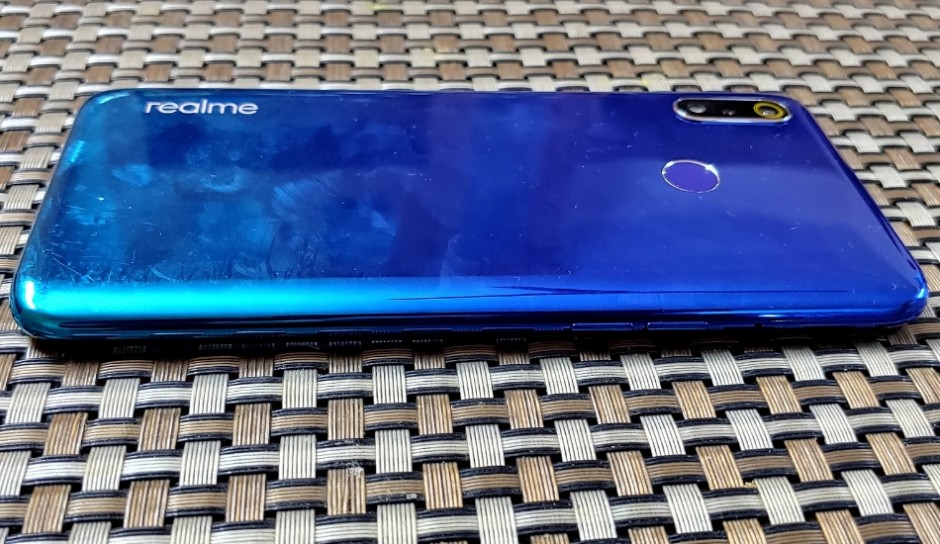
The latest of the three which is the Realme 3 is powered by an octa-core MediaTek Helio P70 Processor clocked at 2.1GHz, which can give some hard competition to devices running Snapdragon 660 and can multi-task with several apps in the background. For the sake of this comparison, we’re taking the higher 4GB RAM + 64GB storage version which is available for a price of Rs 10,999.
We did that because for a budget phone, the Realme 3 packs in larger RAM and storage at the same price as its competitors. While the Galaxy M20 comes at the same price and only feature 3GB RAM and 32GB storage, Redmi loyals have to chip in Rs 1,000 more than the Realme 3’s price to get the same 4GB + 64GB configuration.
The Snapdragon 660 on the Redmi Note 7 is a proven Chipset and has stood the test of time and offers the same performance as MediaTek’s Helio P70. The Exynos 7904 on the other hand still needs some rough testing though it can handle most of the daily tasks properly. However, considering it’ll run Samsung’s interface performance could get a little sluggish with time.
Winner: Realme 3. The 4GB RAM + 64GB storage version is the real deal breaker.
Display:
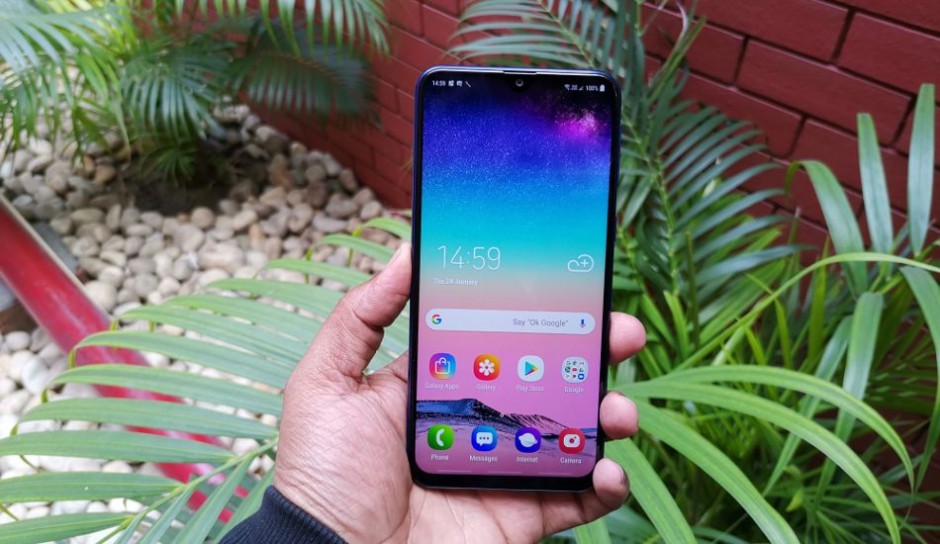
The Galaxy M20 features a 6.3-inch Full HD+ PLS IPS Infinity V display with a screen Resolution of 2340 x 1080 pixels. Samsung has used a TFT panel in this smartphone as opposed to AMOLED displays which are quite common in Galaxy J and On series. That said, the display is still one of the best displays present in this price band.
The Realme 3 features a 6.2-inch HD+ display with a screen resolution of 1520 x 720 pixels. The phone comes with a screen-to-body ratio of 88.3 per cent and has Corning Gorilla Glass 3 protection.
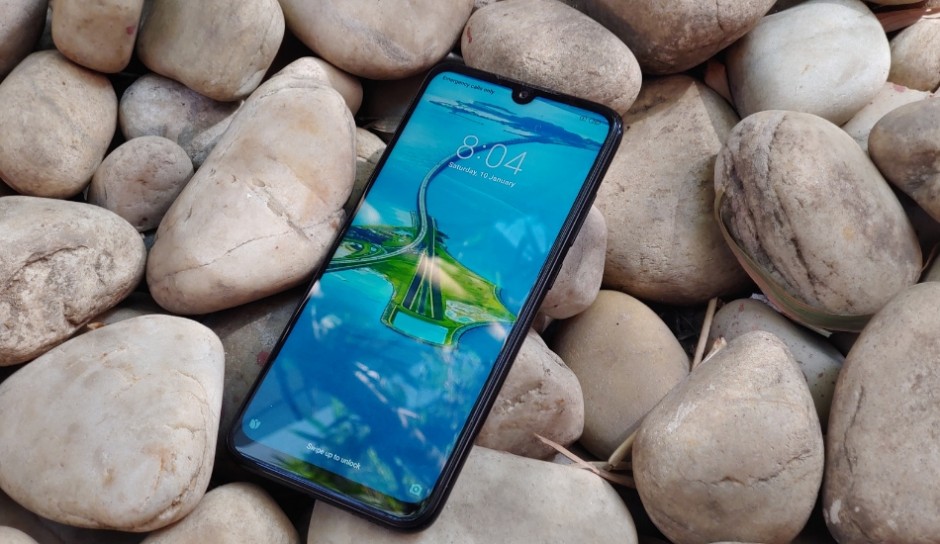
Xiaomi Redmi Note 7 Pro features a 6.3-inch Full HD+ display with a screen resolution of 2340 x 1080 pixels. The company has used LTPS in-cell display for its latest smartphone, which is claimed to deliver better output as compared to standard LCD screens and are more battery efficient. The device has a 450nits brightness meaning that you will not face trouble reading from the display when viewing under sunlight.
In terms of pure screen real estate, it’s the Galaxy M20 which comes with the highest screen-to-body ratio of 83.6 percent compared to the 81.4 percent on the Note 7 and 81.8 percent on the Realme 3.
Winner: Galaxy M20 for an FHD+ screen and minimal bezels, followed by Redmi Note 7 for Corning Gorilla Glass 5 protection.
Design:
The Redmi Note 7 has taken inspiration from the Xiaomi’s other top-end smartphones with a flat glass body that transitions up to the frame. It’s back panel is also yet another glossy affair but instead of standard colours, the Redmi Note 7 Pro arrives in Onyx Black,Ruby Red and Sapphire Blue colours. Not to forget, these glossy colours are protected on the outside by Corning’s Gorilla Glass 5.
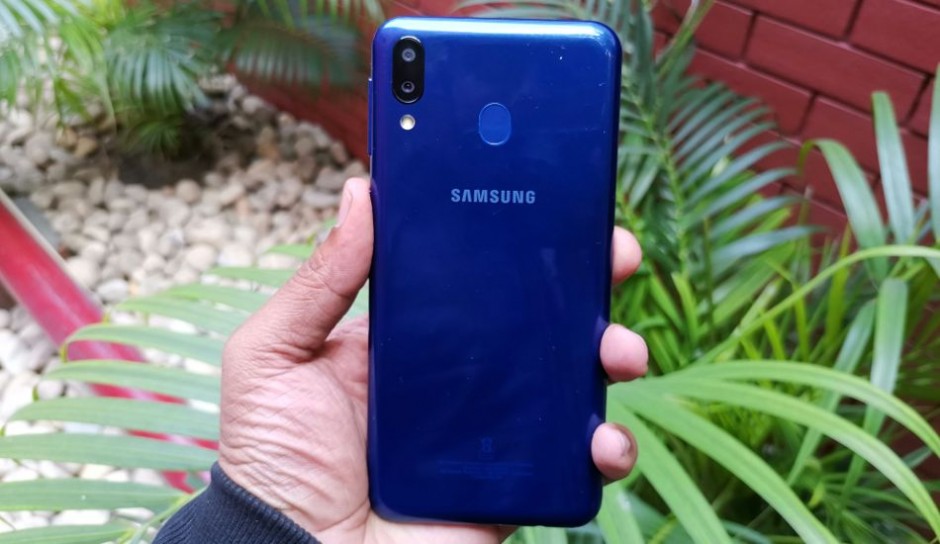
Coming to the Galaxy M20, it is not the best of what Samsung can offer, but the design is pretty much standard. You get a polycarbonate body at the back panel, which comes with a glossy and smooth finish. The finish looks similar to what we have seen in Asus Zenfone Max Pro M2 and the Realme U1. Besides its plastic nature, the M20 still attracts smudges, scratches and fingerprints at the back, which can only be protected by a case.
The Realme 3 like the Realme U1 is an all-plastic smartphone with yet another pinch of new colour schemes in the form of Dynamic Black and Radiant Blue. However, it’s still plastic and doesn’t offer the build of a Corning Gorilla Glass 5.
Winner: Xiaomi Redmi Note 7
Camera:
The Realme 3 equips a 13-megapixel primary sensor and 2-megapixel secondary shooter. The rear camera offers f/1.8 aperture, 5P lens, LED flash and 1.12-micron pixel size. The front camera is equipped with a 13-megapixel sensor with f/2.0 aperture, 1.12-micron pixel size and AI beautification. The shots taken in broad daylight came out to be decent while there’s some loss in detail when the images are zoomed in.
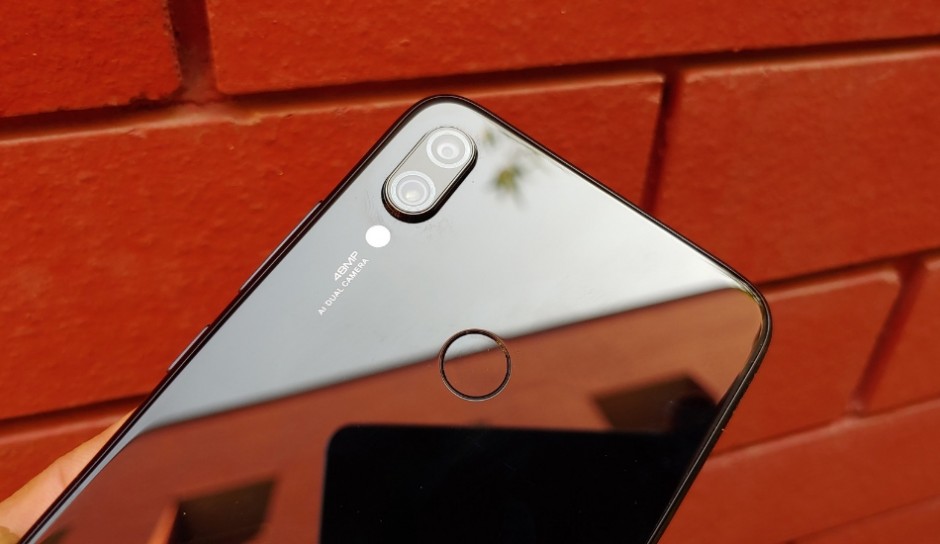
For the camera department, the Redmi Note 7 is equipped with a dual camera setup with one 48-megapixel Samsung ISOCELL Bright GM1 sensor with LED flash and f/1.8 Aperture and another 5-megapixel sensor for depth information. Up front, there is a 13-megapixel selfie sensor as well. The imaging setup is precisely the same as the one on the Note 7 Pro. The shots are well detailed in different lighting conditions and the camera autofocuses really well from subject to subject.
Samsung Galaxy M20 features a dual-camera setup, 13MP primary sensor with f/1.9 aperture + a 5MP ultra-wide sensor. For the front, the company has employed an 8MP shooter with an f/2.0 aperture. Unlike other companies, which majorly uses a secondary camera for depth sensing, Samsung has given you an ultra-wide lens, which is a rarity in this price band. The M20 in our review was able to take some good shots in broad daylight and gives the option to take wide angle pictures.
Winner: A high performing 48MP camera on the Note 7 or an added wide angle sensor on the M20? It’s subjective and it’s up to you.
Software:
The Galaxy M20 still runs on Android 8.1 Oreo-based Samsung Experience UX 9.5 interface but it offers a slew of customisation. The App drawer can be opened with a simple swipe-up, which is pretty smooth and animations are pleasing to the eyes. Samsung is also providing apps like a Game Launcher and Samsung Max with a promise to save Mobile Data and privacy.
The Redmi Note 7 runs on Android 9 Pie with MIUI 10 on top with a slew of customisations and features. While there’s no app drawer, stuff like quick toggles is similar to what we’ll see on a Stock Android Pie running phone. The single swipe brightness slider is the more convenient feature yet and so are the inbuilt gestures which allow one hand usage.
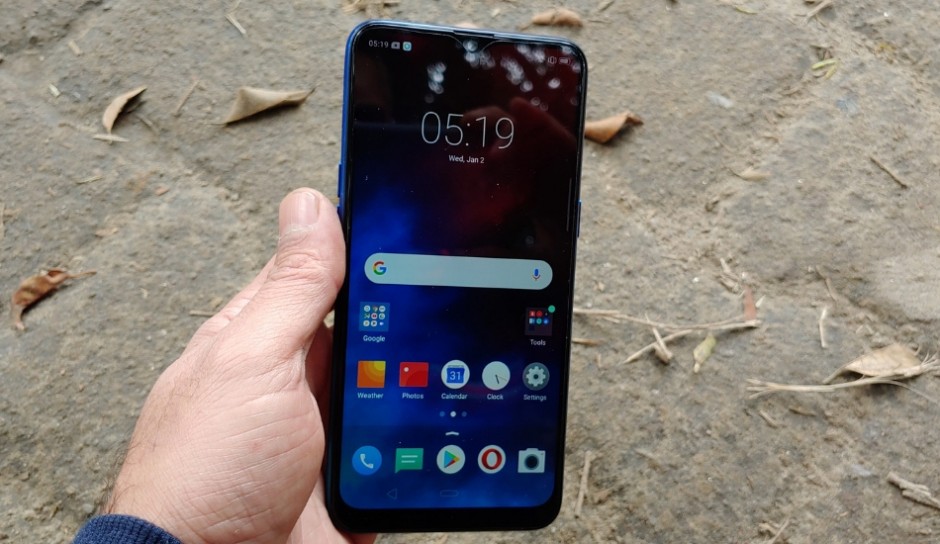
Just like its Xiaomi counterpart, the Realme 3 is also based on Android 9 Pie but on top of Oppo’s ColorOS 6.0 interface. The user interface is now more refined and it looks smoother as compared to its predecessor. The company has given the option of an app drawer, which is a welcome change.
Winner: Redmi Note 7 and Realme 3 for Android Pie, Galaxy M20 for simplicity
Battery:
You know that stoned have been turned when Samsung is offering the largest battery on a smartphone compared to its similar prices competitors. The Galaxy M20 offers 5,000mAh battery compared to the Realme 3’s 4230mAh and Note 7’s 4000mAh power units. While all three will easily last you through a day, the M20 will last you a little longer even when used for gaming sessions. While the M20 leads the battery chart, it’s the Redmi Note 7 which offers a faster 18-watt charging through Quick Charge 4 support. The M20 offers a slightly slow 15-watt charger while the Realme 3 offers standard charging with a 10-watt power brick.
Winner: Galaxy M20 for a larger battery, Redmi Note 7 for the fastest charging tech
Verdict:
| Realme 3 | Samsung Galaxy M20 | Xiaomi Redmi Note 7 | |
| Processor | MediaTek Helio P70 | Exynos 7904 | Snapdragon 660 |
| Display | 6.2-inch HD+, 1520 x 720 pixels | 6.3-inch Full HD+, 2340 x 1080 pixels | 6.3-inch FHD+ LCD, 2340 x 1080 pixels |
| Memory | 3GB/4GB RAM, 32GB/64GB storage | 3GB/4GB RAM, 32GB/64GB storage | 3GB/4GB RAM, 32GB/64GB storage |
| Camera | Rear: 13MP + 2MP, Front: 13MP | Rear: 13MP + 5MP ultra-wide, Front: 8MP | Rear: 48MP + 5MP; Front: 3MP |
| Battery | 4230mAh | 5,000mAh | 4,000mAh |
| OS | Android 9 Pie, ColorOS 6.0 | Android 8.1 Oreo, Samsung Experience UX 9.5 | Android 9 Pie, MIUI 10 |
| Price | Rs 8,999, Rs 10,999 | Rs 10,990, Rs 12,990 | Rs 9,999, Rs 11,999 |
At the time of its launch, the Realme 3 sounds like a refined take on the Realme 2. But now that we’ve come to terms with what it really packs in, it doesn’t seem that impressive. Yes, it’s a bag of mix and match as there’s a decent chipset on the inside with an okay camera and a less impressive HD+ display. Realme 3’s only praise comes from its 4GB + 64GB model that’s available for cheap. For everything else, users can either look at the well built Gorilla Glass 5-clad Note 7 Pro with a 48GB camera and Android Pie or the Galaxy M20 which offers the largest screen real estate and simple to use software for users across all ages.

